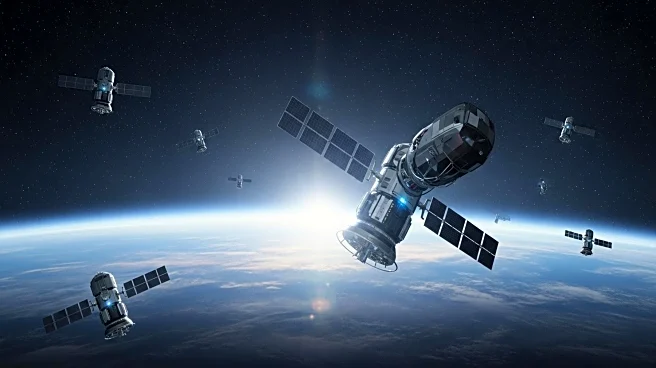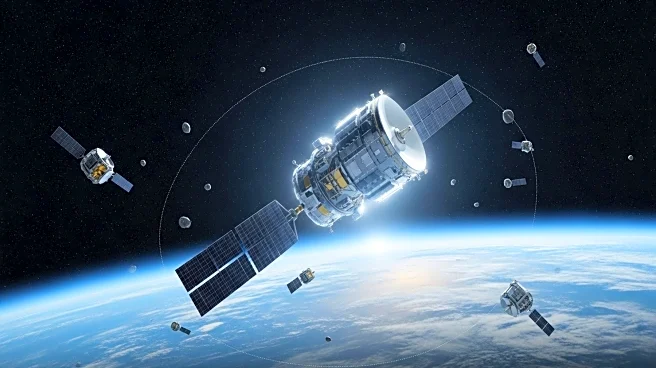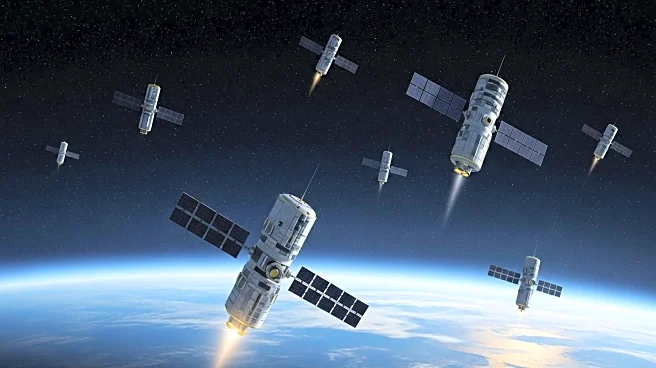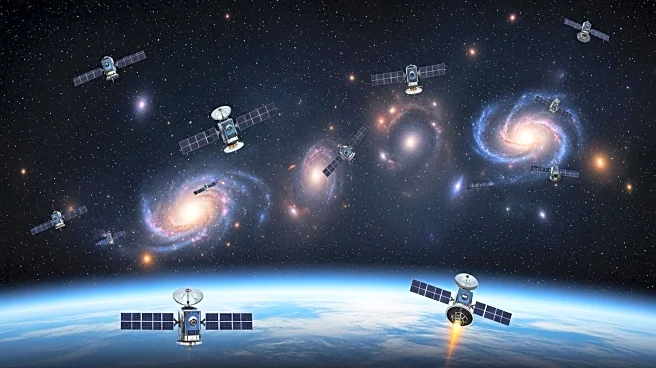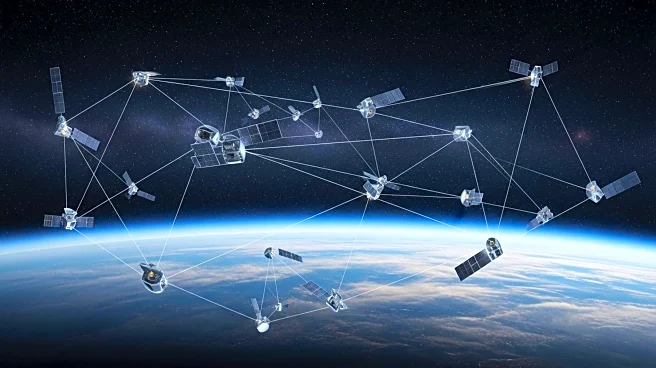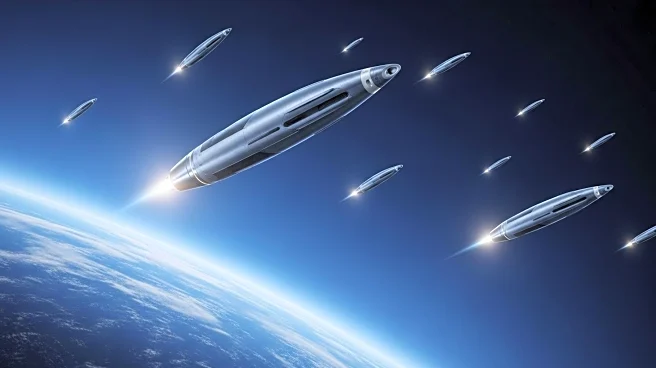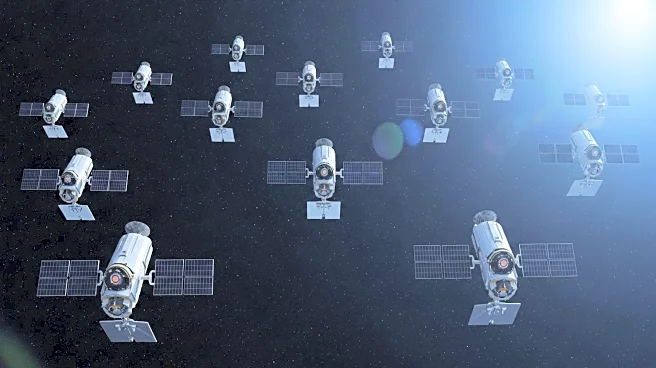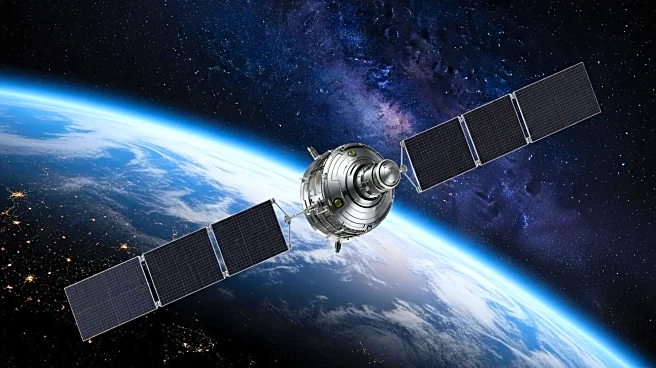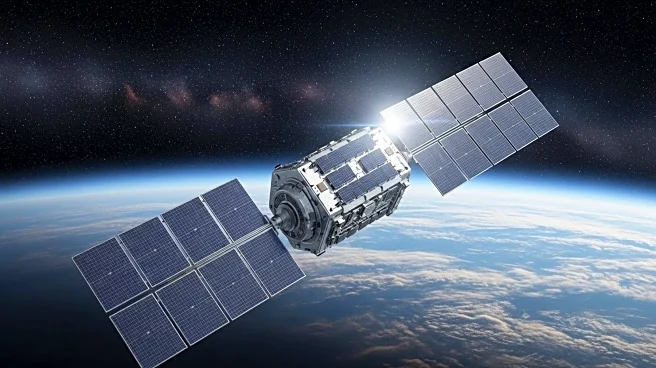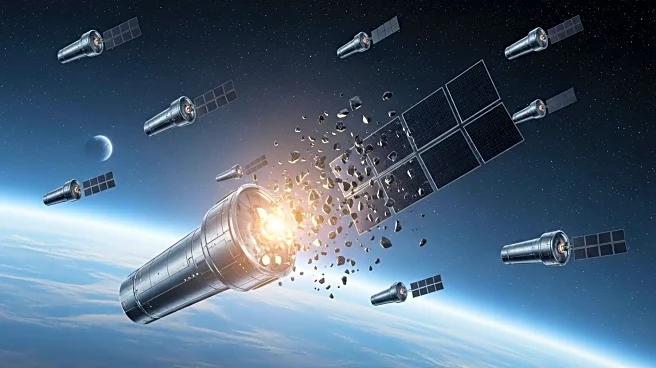What's Happening?
Scientists are expressing alarm over the daily crashes of Starlink satellites, a project by SpaceX aimed at creating a global satellite internet network. Since its inception in 2019, thousands of Starlink satellites have been launched, with over 2,000 new satellites deployed in 2025 alone. These satellites have a short operational lifespan, leading to frequent controlled re-entries designed to burn up in the atmosphere. However, experts are concerned about the environmental impact of these re-entries, particularly the release of metallic components like aluminum, which could affect the ozone layer. Additionally, the risk of falling debris poses safety concerns, with projections indicating a significant increase in surviving fragments by 2035.
Why It's Important?
The rapid deployment and subsequent deorbiting of Starlink satellites highlight the growing issue of space debris and its potential impact on the environment and public safety. The release of materials during re-entry could have unforeseen consequences on atmospheric chemistry, potentially affecting climate and air quality. Furthermore, the increasing number of satellites raises the risk of collisions and uncontrolled descents, which could endanger lives and property. This situation underscores the need for sustainable practices in satellite deployment and the importance of international regulations to manage space traffic and debris.
Beyond the Headlines
The situation with Starlink satellites also brings attention to the broader implications of satellite proliferation in low Earth orbit. The potential for Kessler syndrome, a cascade of collisions due to overcrowded orbits, is a concern as more companies launch satellite constellations. Additionally, solar activity can destabilize satellite orbits, increasing the likelihood of failures and re-entries. These factors highlight the need for comprehensive strategies to mitigate risks associated with satellite operations and ensure the long-term sustainability of space activities.
